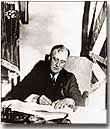Lend-Lease Act of 1941
Before the United States entered the war, many Americans were hesitant to join another war on foreign soil. President Roosevelt needed to guide the nation and combat the spread of Fascist regimes now openly fighting against Democratic Allies in Europe. One of the things President Roosevelt campaigned for was staying out of the war. However, with foreign politics and what was going on in Europe, he realized that was not going to be. The United States needed to prepare for war but also keep its neutrality. The Lend-Lease Act of 1941 was one of President Roosevelt's many acts that assisted the Allies. The task before you is to look at what the Lend-Lease Act was and whom it benefited.
Read the following article that is located from History.com. The URL link below will take you to the article. After reading, answer the questions below in short-answer response format.
History of Lend Lease
https://www.history.com/topics/world-war-ii/lend-lease-act-1
Questions:
1) How was the Lend Lease used to deal with the war in Europe?
2) President Roosevelt initially partnered with Prime Minister Winston Churchill to assist the United Kingdom in their war with Germany and get the necessary equipment. Who were the prominent people that President Roosevelt had to sway with this action, and what were their reasons for wanting the Lend-Lease Act?
3) What countries gained the right to participate in the Lend-Lease Act?
4) What were the qualifications a country would have to show to be offered the equipment from the Lend-Lease Act?
5) Do you support or disagree with President Roosevelt and the United States with signing and enacting the Lend Lease act, and why?













